Welcome To The Sherman Tank Site
UPDATE! Check out the new Sherman Tank Art page!
The Website started out as a thread on the Sturgeon’s House, and it grew into something so huge that I felt it needed its own page. Check the introduction to get started, or just jump around the sidebar index. The best place to discuss the content of this website is the thread about it on the SH forum. The Sturgeon’s House Forum is a very interesting place. If you have any interest in good information on a lot of subjects, information-based, and no trolling, check it out. If you have an interest in firearms, armored fighting vehicles, combat aircraft, and even ships, the forum has a lot to offer.
Please feel free to comment on any post directly as well; it will have to be approved before it shows up. The Number of Spam Bot comments I get is nutty.
Also, feel free to let me know about any cool Sherman info you may have or mistakes I’ve made. There is a thread about this over on the Sturgeon’s House forums. You can contact me there or through this page at TheShermantank.com@gmail.com
I plan on updating this site for as long as I can find out new and exciting information on Sherman tanks. Since I just found a ton of new TMs on the Sherman, I have plenty to write about.
The site has now been online over two years, and traffic has grown every month, with august of 2017 was the best month yet, with well over 24k visitors. The new data sheets I have created for the guns and tanks have been very popular. I will be adding more as time allows. I’ve been working on an Engine Data Sheet. The beta Ford GAA one is up for download. I’m still tweaking it, and I’ve started work on the GM 6046 as well. The GM 6046 Data Sheet is very close, and I have everything I need to do the A57 and R975 as well.
Due to the volume of data and the difficulties in finding specific posts, I’m adding pages on things like the tanks, guns, and motors, and there will be an entry in the pull-down menu for each. There are now pages for all Sherman models and all TD models, and I just need to add the Ic Firefly and Rampages. You can find them here, and see the image below for a selection of the various pages. there are more subpages than shown.
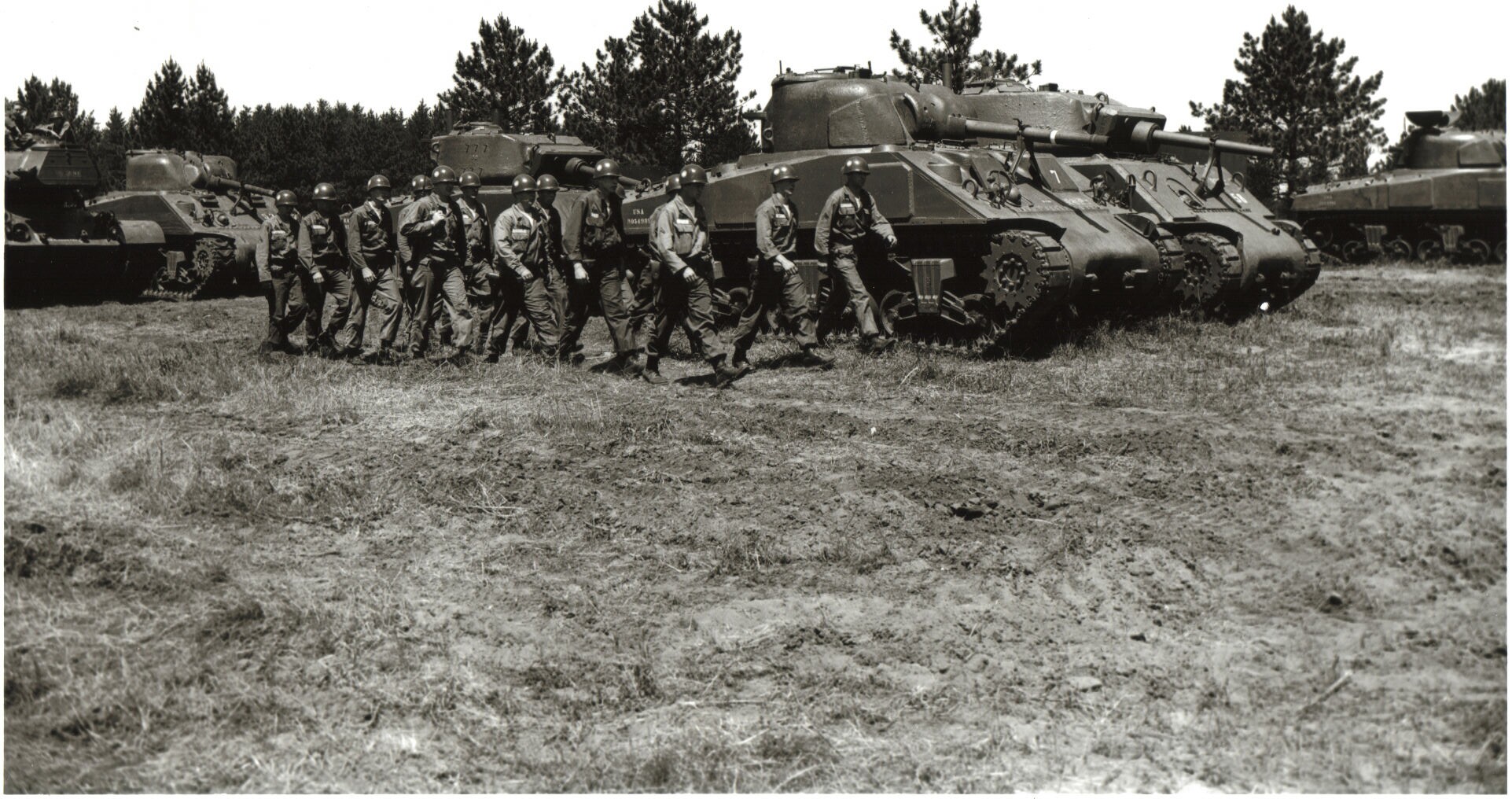
For more info on the site owner, click here.
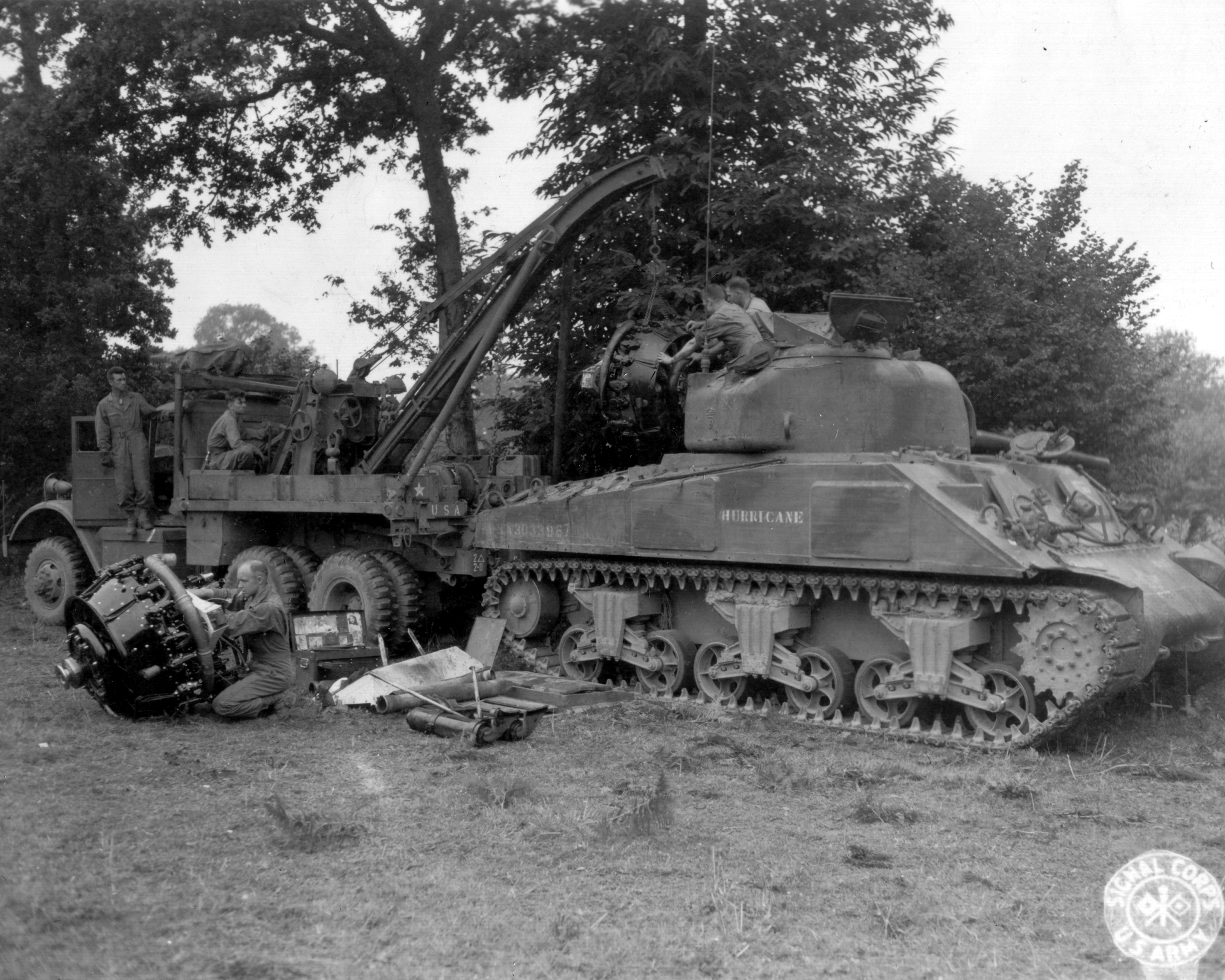
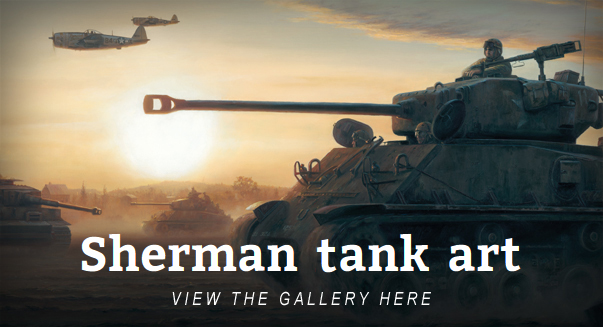
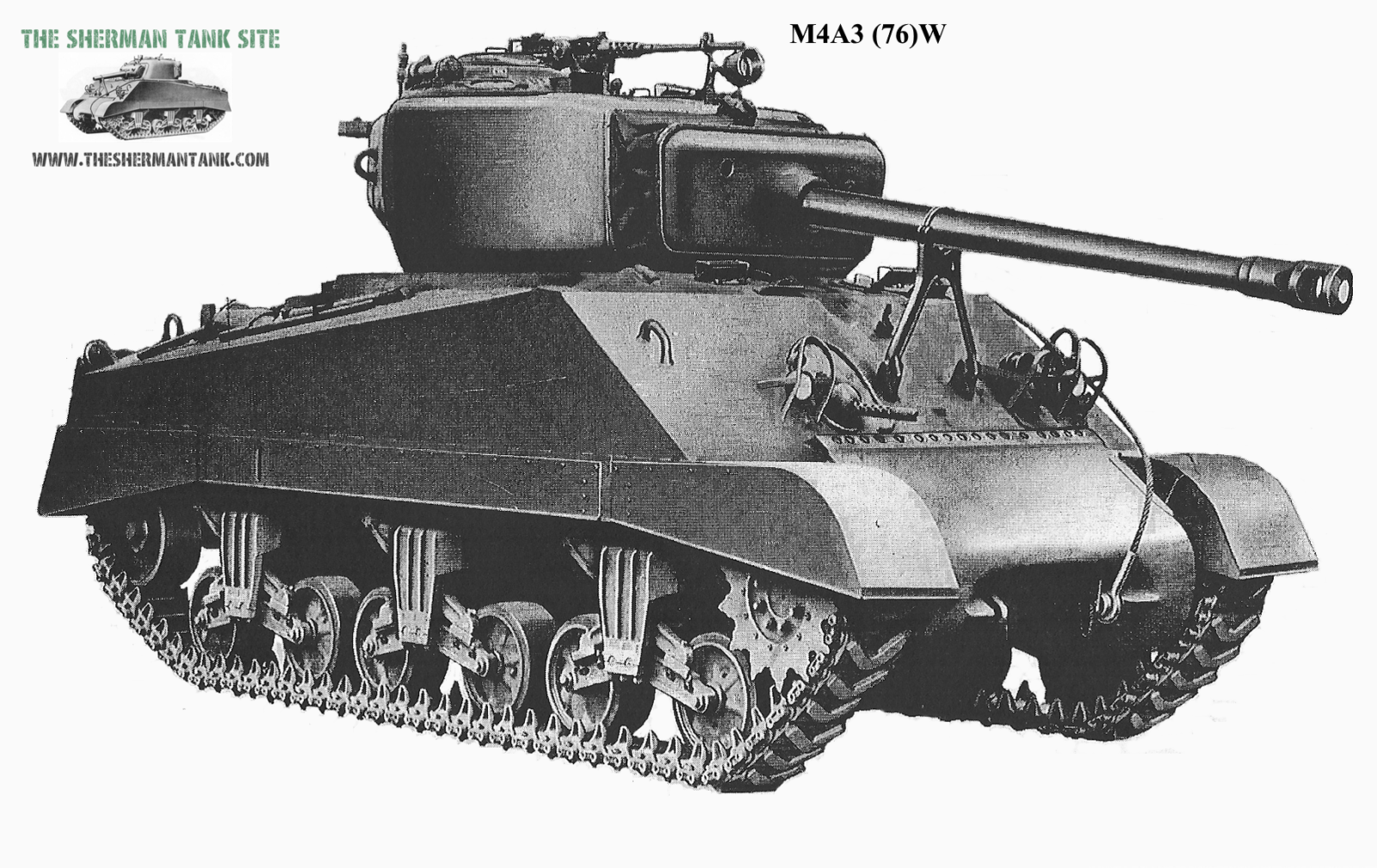

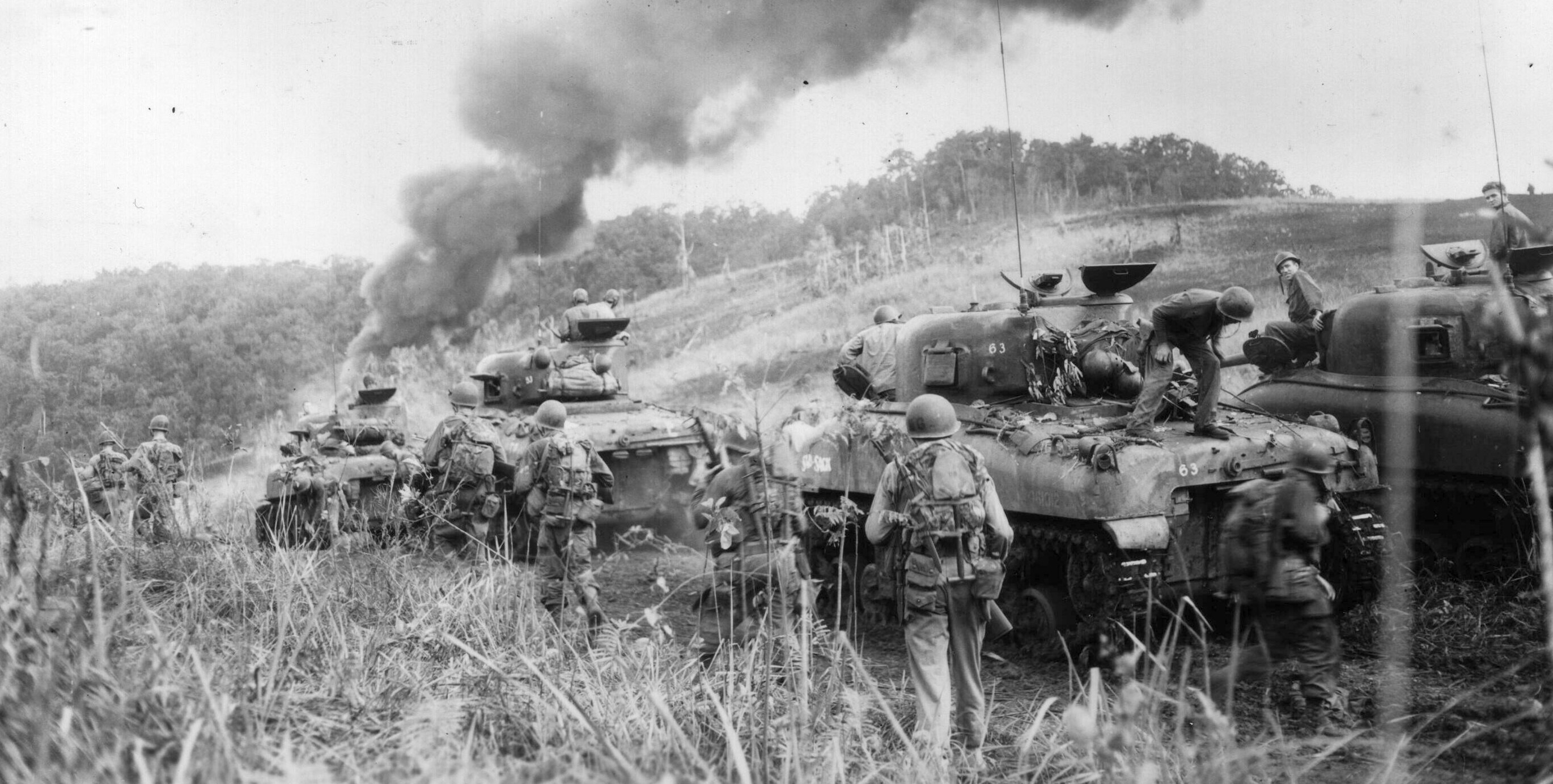
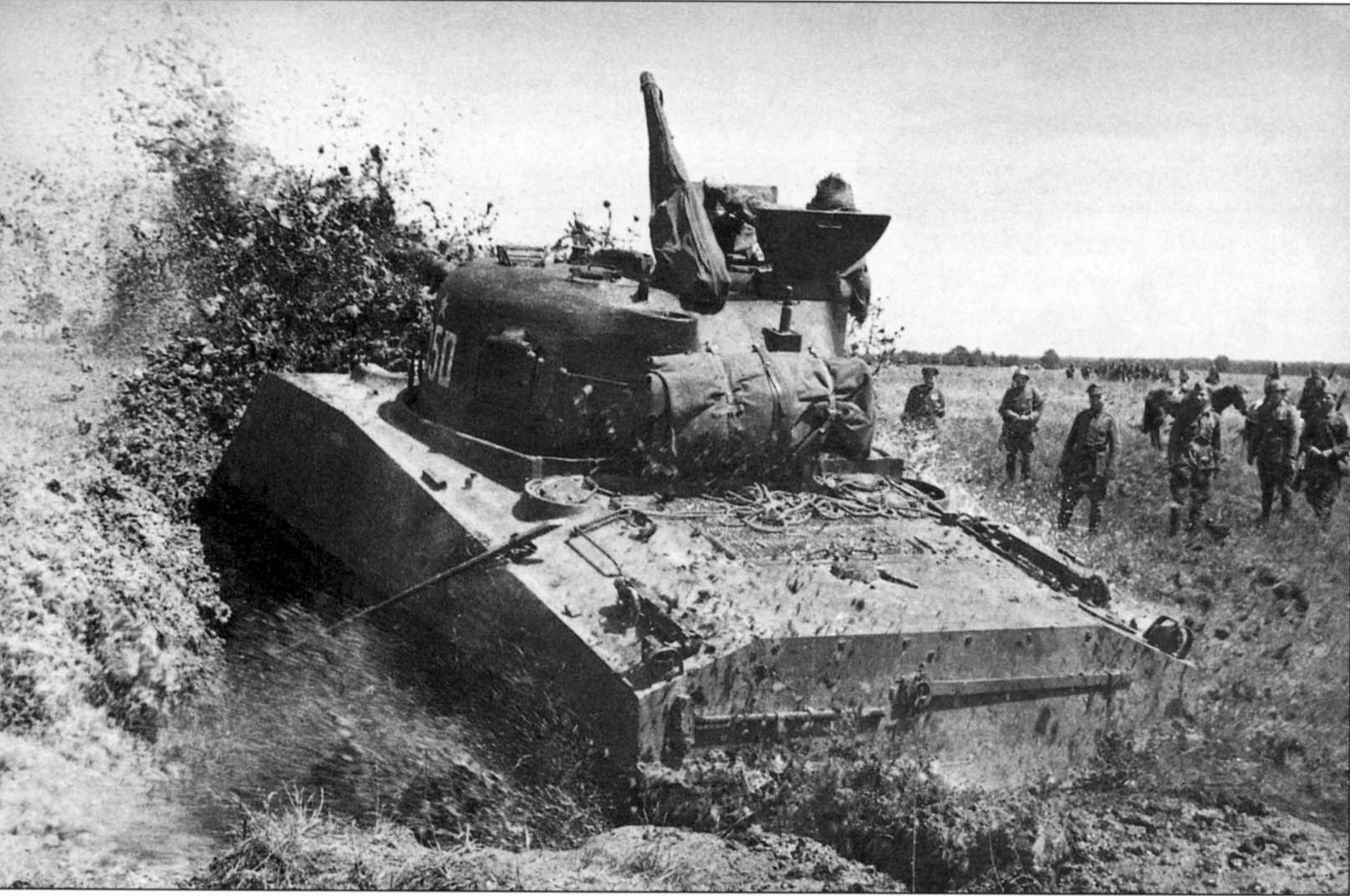
Does anyone know how the M4A1(76)W was introduced in France in 1944? Were they sent in as platoons or companies or battalions? Or were they fed into existing tank units as replacements for battle losses?
Andrew,
As far as I recall, they were issued to both independent and armored Division Tank battalions in batches. They gave each battalion enough to roughly put one M4A1 76W into each tank platoon in each company. The units to see action in Cobra got the tanks first. Then they just got issued as replacements for broken down or knocked out 75mm tanks.
I am doing a diorama about the dash across France in 1944. Did the Shermans ever refuel from drums carried by Deuce and halfs? Are there any pictures of Shermans refueling? Thanks for your help.
I am the Squadron Commander for the Sons Of American Legion / Post # 463 in South Boardman, MI.
I am starting the process of refurbishing our Sherman M4A3 Tank and I am trying to identify the proper military color / color code of our tank. I have been unsuccessful so far in my attempts and am asking if you would be able to point me in the right direction on this or verify for me?
Serieal # = 2662
Type = M4A3(75)
Manufacturer = Ford
R/N # = 3055622
Notes: Direct Vision, possibly oldest surviving Ford Sherman
Located = South Boardman, MI USA
I sincerely thank you for your time and assistance.
Paul Birgy
El patrón correcto sería el bosque rugoso
my father was in the royal artillery, and drove a Sherman o.p. tank, anyone got information or photos of one of these, some say it had a dummy gun barrel,
Stephen,
I am pretty sure they did not have main guns in the O.P. Tanks.
Wanted to reach out to you regarding a new M42B1E9 Sherman we recently acquired. Serial Number: 415 / RN#: 3015171 . We are trying to piece together the history of this particular rare flamethrower Sherman tank. Any help would be greatly appreciated. Thank you.
Hi
Just found your site, very great info
What are your thoughts on the m4a1 firefly as i have just seen one in a ww2 film in Holland.
It is not a hybrid as you can see the rounded sides all the way to the rear.
Thanks
shaun
Hey, all.
I am looking for ANY pixs of the the famous “tiger face” Sherman TK45 of the Korean war fame. I have located only two original photos so far. The first one with the GI standing front left of TK45 next to a row of tents. The second a closeup of with the crew crossing the Han River. I am trying to locate any shots that show the sides, rear and top of this particular tank as I am in the process of repainting our E8 in the famous yellow tiger paint here at the AHM. Obviously I am very distrusting of any artist “interpretations” or decal sheets. Any help would be GREATLY appreciated as this is already turning out to be quite the project as it is…
Jeeps_Gun_Tanks,
You didn’t happen to play WoT with that handle did you?
I did, but not in a few years now.
I play all the time..but its been a long time i’ve played with an m4…i mostly play with the m1 Abrams..or the t80b…
You can find me in the game..as :..RELAX71
Im always in the WAR THUNDER 100 free fights..
My uncle worked for Chrysler Corporation after WWII ended. Obviously he had it because Chrysler operated the U.S. Army Tank Command in Warren, MI for many years. After he passed, I helped my dad sort his possessions and I found a Service Parts Catalogue for a Tank, Medium M4A4. Do you know if someone could use this book?
Bob
Sorry for your loss. I could use it, I don’t have a copy of that one.
Send me an email at theshermantank.com@gmail.com
Thanks!
Hi,
Well, the model of the M4 composite is ready for decals, and a spray of Dull-Cote. I do have a question……..
On the top of the turret, there is a “hole” on the top right front (as you look at the front of the tank). The hole doesn’t make sense and yet there obviously is a reason for it. Anyone know what it was for?
Thank you!
Bill,
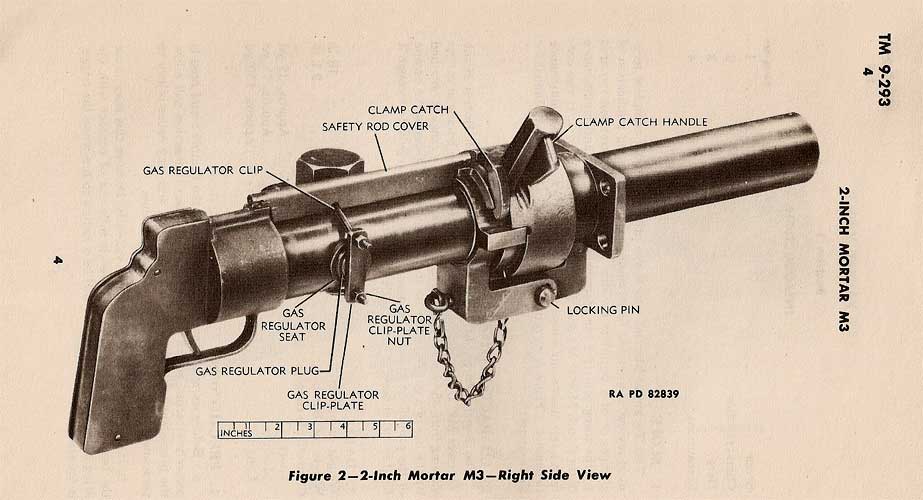
It’s the muzzle opening for a smoke grenade launcher.
I’d love to see some pictures of the build!
I have pics to post, but confess I don’t know how……….
William,
Send me an email, and I’ll help you post the pics.
theshermantank.com@gmail.com
Thanks
Jeeps
Hi,
I was just dropping in a quick line to know, if I could send some great article ideas your way for a guest post at your website ?
If you like my suggested ideas, I can then provide you high-quality FREE CONTENT/ARTICLE. In return, I would expect just a favor of a backlink from within the main body of the article.
Do let me know if I can interest you with some great topic ideas?
Best Regards,
Hassan K.
There is a tank with two large protrusions on the body of the tank as seen at 08:29 in the invasion of Luzon, what the heck are they? https://www.youtube.com/watch?v=LBHStlrTVDg
Air intakes for the engine – the whole contraption being set up so as the engine would not be flooded while the tank was wading ashore from a tank landing craft or moving inland while having to cross water (rivers, ponds etc.)
Hi.
Cogratulations on your page.
Here, in Chile, the Army used a several times updated version of the Sherman. They were the frontline of the Chilen armored forces until the begining of the 80’s, whent they started to share space with the French made AMX-30.
The good and loyal M-40’s were retired from the inventories in the early 90’s, when replaced by the German Leopard II.
After several modernization processes in Israel and in Chile, the Chilean Shermans, regarding a fortunately never brought about conflict hypothesis, were probably superior to the Argentinian made TAM and surely able to give hard fight to the much newer Peruvian Soviet models.
Whenever i read about Israel’s early Sherman tanks and their acquisition, i always run into this phrase at the end of the paragraph about how the tanks were acquired from …… and at the very end this — “buying them in the Philippines”. And this is where i got stumped. No more data ! Dig deeper and trying to find out how this was acquired from thePhils. Purchased from wrecks? Salvaged & purchased from junkyards in the Phils. ? Purchased from the govt of the Phils. ? Clandestinely sold by Phil. govt to Israel ?
Would appreciate any data on this ….
Hello again. I have just started on the Half Size replica sherman firefly.. And have made the decision to go all steel….except for the tracks that i will cast in Aluminium..so today was a big day..I have laid out the chassis and sponson sides and started the first welding of parts… I have even found a local sherman tank…just 15 minutes away… But I’m wanting confirmation on the hull length underneath on the firefly version as per the film Fury..can anyone tell me the correct measurements please..as I have to lengthen the chassis at least 20cm and want to get it right first time.. Also I would like to post pictures of the build if I could have a dedicated page or link.. And ill do a facebook page for my photos as well….colin. France
Colin, have you looked at the manual pages? The Firefly is a VC with the multi bank engine so longer. I the manual page does not have the info, contact the Tank Museum in the U.K. they have all the specifications of all tanks.
ok thanks thats another source of info, going from the dimentions of the local tank, as it has the bigger spacing between the sets of road wheels, i believe it to be one of the longer chassis type. ive been back again taking more pictures and measurements.
I have lengthened the frame i had for the chassis and welded the chassis bottom plate in situ , as my tank will not have scale thick steel plate, i have started with a frame on to which the sponson sides and bottom plate are welded. Also fitted the towing attachment to the rear of the chassis frame with a reinforcing on the inside so It could pull a heavy load behind. sadly a bad back has stopped me doing any more today, but the base is there, 80 cm wide and 224 cm long, above the sponson it will be 1m30 wide with the extra lip protruding even further . the track width should just fit on my trailer i built to transport my halfsize landrover and motorcycle. by replacing the lights on the trailer for a set fitted on outriggers there will be enough room to fit the half size tank without running over the lights!! the front drive train assembly will be started next week, im looking forward to building that. It will be very heavy as it’s going to be thick steel plate shaped and welded to form the housing and be strong enough to mount the drive gear to the sprockets without any extra reinforcement, so it will look perfect. As the engine im going to use is smaller than a scale size engine, i will be able to have the engine bulkhead a little further back and have extra room inside. I will fit twin fire extinguishers and pressure feed the air to the engine compartment, keeping a good airflow for the air cooled engine. im also going to fit two high power fans to the crew compartment from the vents (scale ones on the top side) to supply fresh cool air and to pressureize the compartment to keep out any heat or fumes from the engine compartment.
i will post some pictures when i figure out how and where to post them on here, but i will also have some photos on my facebook pages.
Hi, Looking for information on the M2 Blade assembly used on the HVSS Sherman. I can’t find much although I do have the TM number – TM 9-722, so far no luck.
Any help very much appreciated.
Pete
good site. interesting reading. some comments and links.
as this site points out, the Sherman was a medium tank, the “Cats” were heavy tanks. the US was developing heavy tanks during WW2, but did not ship them to Europe till 1945. one thing usually not brought up was shipping space. A Panther left the factory, was put on a train car, and went by rail 500 to 600 miles to the battle field. size and weight were not an issue. A tank made in USA would travel 500+ miles by rail then get put on a ship. a Sherman would occupy at least 1600 cubic feet of space. a M26 would occupy at least 3500 cubic feet of space. so do you ship 100 M4 or 50 M26?
a new study on effectiveness of M1A1 & M1A2 76mm gun on German armor http://www.dtic.mil/dtic/tr/fulltext/u2/1045347.pdf
a history of independent tank battalions https://www.amazon.com/Steel-Victory-Americas-Independent-Battalions/dp/0891417826 first quarter of the book is about Normandy.
The Other Side of Time by Brendan Phibbs is a memoir of the 12th Armored CCB Surgeon. good read, especially the last third which covers the breaking thru the Siegfried line to surrender.
http://cgsc.cdmhost.com/cdm/ US Army digital library lots of WW2 unit histories and related articles
The only legacy the Panther left was that a tank weighing 42 tons could be very mobile and have no problems attending the fight. And so the distinction between Medium and Heavy was burred because 42 tons was proved to be not that heavy.
First that I knew this site existed. My father worked at the tank plant in Lima,Ohio during the war. He put radios in them,but I do not know if any of them were Shermans. The Allen county museum in Lima,Ohio has I believe a runner in a back building. But I have not heard anything about it for some time. Hope this bit of info is helpful.
Hello there, thanks for an interesting site!
I have been asked to help locate a full set of tracks for a T48 Sherman. Part number C106350, would be grateful for some suggestions
Thank you
Kevin
Hello, I’m looking at building a half size Sherman tank…no small task. But one that I’m confident could be done if only I could decide which version would be best.. First a little history. My best creation to date is the minilandrover I built that is now in the hands of a private collector in the south of France.. I had built the military lightweight version as it’s flat sides made for an easier build. However the high detail build meant that it is the best half size land rover ever built.. Videos on youtube show the detail.. That included a full steel chassis, leaf spring suspension , aluminium body panels with all openings , twin fuel tanks, petrol engine full radio installation , winch etc etc .
However being resident in France meant the predominant public at the shows I attended were French and typically more interested in American and WW2 military equipment.. Hence the new project to build a half scale replica that will please onlookers as much in France as in the UK. And the Sherman Firefly is the most iconic machine that would fit the bill.
So my need for information will dominate the early stages to see if I can design and build a useable replica…Why half size ? Well I’m 1m80 tall and I am planning on driving from a seated position beneath the turret where I can operate the driving controls and fire blanks through the main cannon . I plan to have the forward positions *driver and forward gunner* available for small children to operate some controls and fire a dummy machine gun.. The first question I have is the tracks used.. As I want to copy a real Sherman and why not the one made famous in the film Fury.. To make the best type of tracks suitable for turning on hard and soft surfaces without throwing a track. I’m confused about the tracks used as I read that some tanks were upgraded (presumably in to field) to ditch the narrower tracks 16 inch and using the wider 24inch ones from another tank..were the front drive sprockets designed to be swapped out or adjusted to take both sizes…? Or were the sprockets fitted to a common size drive shaft that was common to shermans and other tanks..? When changing the tracks surely the road wheels and idlers must need to be changed as well …? And I see tracks with outer guides and others presumably on the wider track with a central guide and twin road wheels. Which setup was better and most capable of keeping the Sherman on track..excuse the pun.. Please treat me as a total numbskull as my knowledge on tracks is very limited.despite me being a good engineer capable of welding or even casting the track links…in aluminium … Colin
Colin,
I just sent you an email. Let me know if you don’t get it.
Jeeps
Yes thank you, i will still go to the local tank museum (100 kms ) but as i have permission to crawl all over one and get all the fine detail and data, it will be a boys day out as i have a friend, biker who is ex military, and we did the museum last year before i decided to build one..
ill be riding my copper chopper, so it will be a great day out again.
thanks for the link..
colin
Sorry it looks like i have accidentaly deleted the email, could you send it again please, sorry to be a pain…
i have designed the transmission, and will soon be building a mockup to test the theory. but i need the dimentions of the underside of the tank, width between the tracks and length.. i read somewhere they altered the length at one point ?? this will be a challenge to identify when looking a a sherman tank. i have decided to build a M4A3 firefly,HVSS and to copy the one used in FURY. I think it would be a great build and im going to do the rubber block track in cast aluminium.
Hi, Were the Korean War M4A3E8 Army Shermans painted the same Olive Drab as the WWII versions ? The Tamiya recent release of the Korean war Sherman version states a lighter Olive drab.
Ron,
Good question, I always assumed it was the same, but I’ve never confirmed it. From what I’ve read though, depending on primers and thinners used, even WWII olive-drab can vary quite a bit. I’ll ask around and see if I can get you a better answer.
Actually, there were constant variations in paint colors. From Olive Drab which was almost a brown color to Olive green in all variations of the color. In fact, my wife’s German Aunt remembers mentioning the Yellow American Tanks and how they would run to them to surrender as refugees knowing they wouldn’t be harmed. So, pretty much any good variation of Olive Green would work for a Sherman.
looking for more existing Sherman’s that are restored
so a question for anyone who knows the answer…
how many shermans are left? i know there are about 5 in bovington tank museum atleast 1 at duxford imperial museum and while in france loolong at d day landings i have seen 4 so how many in total
thanks
James,
I’d bet there are possibly over 100 in varying condition. There are a lot of Shermans sprinkled throughout the USA as monuments in parks or as gate Guards. There are a lot in private hands and private museums, in Europe and the USA. Plus the ones in South America and the middle east.
They do a great job of keeping track of them at http://the.shadock.free.fr/Surviving_Panzers.html
A ton of them can be found in this related Imgur album.
https://www.flickr.com/photos/13963542@N08/albums/with/72157673454918482
Don’t forget the handful of submerged Sherman duplex drive tanks. I forget where they can be found (sorry!), but I know that there are wuite a few.
There are some under the sea off the normandy beaches. They were launched far too early as i believe the boat comander was scared of getting in nearer the hot zone. The swell was too much for the canvas screen and they all got swamped and sank..
This might be your ultimate opportunity to see, drive, and FIRE an operational M4A2E8.
https://www.drivetanks.com/tanks-tracks/
My uncle drove a Sherman in nth Africa and Italy. He was in the 10th hussars his main fear was the 88mm one near miss went down the side of his tank later they found scorch marks on their kit bags that were stored outside strapped to the side of the tank when they brewed up some tea all the tins of condensed milk was sour due to the heat of the 88mm round passing by I have a few photos of my uncle taken in the desert in one his waiting to load his tank onto a recovery tractor and there’s good detail of his uniform and along with his issue side arm he has a Luger in his waistband
Stephen,
Awesome comment, and crazy story, thank you for posting it.
Hello!
Great website and great info, that’s why I need your help. I’m a metal detectorist from Romania, and this August I found a half lid of a Sherman tank in the Jassy area, where in 1944 during the Russian offensives, some of their lend/lease tanks were knocked out.
It has a code on ti but it doesn’t match the code in one of your illustrations. Do you have any idea why the code differs?
You can see the pictures here
http://relicsandmilitaria.ro/2017/12/07/jassy-kishinev-offensive-area-1944-part-2-sherman-tank-lid-shells/
Thank you, and keep up the good work!
The D number refers to a drawing that carries the standard(s) for said part.
You could have an interchangeable part, with a couple different D numbers, depending on where it was made, how it was made and/or what minor variations it may have.
Hi!
This is the best Sherman´s site of the web.
I have a question. Newly I have seen a photo of a M3 Lee with track link connectors installed upwards – the teeth are facing the ground. And a person says that it is was an emergency solution in TM manuals. In what manual can I read on this?
Best regards,
Miguel Cinquino from Argentina
Hello Again,
I live in Israel, and there’s a very cool tank museum here, at Latrun. I see that you have a post about it on your site. They have several Shermans (which were used by the IDF in the ). They even have one on a tower:
https://en.wikipedia.org/wiki/Yad_La-Shiryon#/media/File:M4-Sherman-tower-latrun-2.jpg
Adam
Hello
love the site, very informative. Soon we will be starting the restoration of M4A3E2 “Jumbo” # 73. She is one of 6-7 left in the world and the third ever in a private collection.
We will have a web/facebook/instagram dedicated to the restoration. Once that is set up I would love to link to your page and enlist you to assist us in getting word of the restoration out to Sherman lovers everywhere.
Thanks
John
John
I’d love to do anything I can to help. I’ll send you an email.
Love your site!
Question: How come some Shermans have tracks with no “cleets”? Most have a cleet, but thos with the the duckbills, and others it seems like, in some pictures have just a flat plate for the track piece.
And also, what does the “w” mean in M4Ax (76)w?
There were several types of Rubber track with no clear, but there were also several models with steel cleats, and one with a rubber chevron.
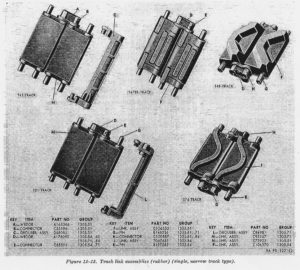
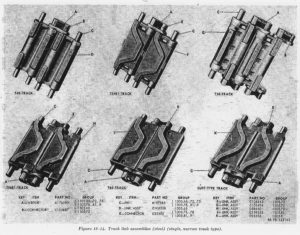
All could take duckbills, but not while the bolt on grousers were in place, L in the image above.
The W in any Sherman name is an indicator that it had Wet Ammo racks and all the ammo was installed in a armored ready rack of six to eight rounds on the turret floor or in the racks surrounded by water jackets in the hull floor.
All factory born 76 tanks with the T23 turret, the M4A1 76W, the M4A2 76W and M4A3 76W, had wet ammo racks, and some late production 75 tanks had it as well. The wet part of the storage was discarded after the war, but the racks remained in the same location.
Great write up! I wanted to make a few comments I think are relevant and interesting from a friend of the family who worked making the engines for ICBMs and then worked on the design of the Thermo-baric bunker-buster bombs, a 90 some year old officer from Patton’s Third Army, and two enlisted men I met at my Grandfather’s funeral. Sorry if it is long, and if I ramble.
In WWII our soldiers fighting in Europe felt their equipment was better hands down that what they were fighting against in all departments save for tanks.
First I want to say something that I really have not heard said online or in books, but absolutely huge advantages we had over the Germans in WWII was Dzus fasteners and Army/Navy or AN- fittings. Dzus fasteners were a clip/screw that was invented by an American who they Germans would have considered a sub-human that allow the panels that were attached to aluminum airframes to be remove and re-attached so service the components underneath with the twist of a common screwdriver. This fastener is one of the reasons we shot the Luftwaffe out of the sky. When our enemy’s planes took damage from air-to-air or ground-to-air fire they had to cut out rivets to remove the panels make repairs and then re-attach the panels with rivets. It was many times impossible to do in battlefield conditions, let alone in a timely manner. The Dzus fasteners allowed us to remove and re-attach panels with ease.
The next huge advantage we had were AN- fittings. These fittings were developed to allow hoses that carried fluids, like hydraulic hoses, fuel cables, cooling lines, to be removed and then replaced with the turn of a wrench. All the Germans had were flare connections. It is very hard to cut and flare new connections in battlefield conditions quickly and reliably. This affected the enemy’s ability to make repairs to aircraft and tanks, all of which have many fluid lines. The German tanks were in many ways no less reliable that out machines. Everybody, Russians, Germans, British, French, and us all used the same equations and worked with the same parameters for power to weight, gearing, etc, and all these machines broke down where major components failed, or minor components failed. The difference was, with our tanks, you could just remove components from the vehicle as needed, make the repair, and then replace the components quickly, and with assurance that they connections you made would work. The Germans, on the other hand, had to cut apart their connections, and then cut and flare new ones, which they could not count on working reliably, and it drastically affected their unit readiness in combat.
When the Germans invaded France in 1940 the French had much heavier tanks compared to anything the Germans had on the battlefield. When and if the Germans had to face the machines the French were able to inflict heavy losses on the much lighter German machines. The problem for the French was that these tanks were extremely limited by range, and speed, and therefore most of them were unable to meet the German spearheads, and for the ones that did, they were simply overwhelmed. When we rebuilt out Army for WWII we wanted to be the Germans in 1940, not the French, and we wanted lighter, more maneuverable tanks, and more of them on the battlefield than our enemy, and in this department the M4 was a resounding success.
Before we entered the war two people, one of which was George S. Patton, another was in the Army Command, if we should pursue heavier tanks to field in battle, and both of them felt that a heavier tank was not necessary to win the war in Europe, and in fact, both were correct. Had we worked on tanks as we did airplanes, or naval vessels, and the way we did, it is quite possible that the Germans would have had to face US tanks more close to the M41 and the M46/47/48 tanks, when we came ashore in France, which would have completely obliterated anything that the Germans had, were planning to make, or dreamt of making, and in greater numbers than they could have ever produced.
As for the Germans, and the tanks they developed after the Panzer IV: When the Germans entered Russia in 1941 they started to see T-34 tanks, and some KV-1 tanks, and the only thing that they had on-hand to engage and knock out these machines, besides artillery, was their 88mm Anti-Aircraft guns, so that is what they used. German artillery in WWII was mostly horse-drawn, and therefore was not reliably around the front because the mechanized forces that created the front outpaced it. (The US artillery was mechanized and the Germans could count on it being at the front as they were always pummeled by it on breakouts – just ask their veterans of Normandy and the Bulge)
Then the trickle of T-34 tanks turned into a torrent and this sent panic through the German tank corps, and up the chain of command. First came dedicated anti-tank guns in high velocity 75mm, and 88mm, first the shorter 88mm that was the same as the Flak 88, and would be mounted on the Tiger 1 and then a longer length and higher velocity 88mm that would be mounted on the Tiger 2, and in the meantime a bunch of tank destroyer vehicles like the Nashorn to combat these heavier Russian tanks.
Even the Panthers and Tigers were compromises, just like the M4.
In Russia one of the reasons why the Germans were able to destroy so many Russian tanks was that the Russians were not as concerned about training their tankers and many if not most Russian tanks they faced were not equipped with radios. The Russians just sent them forward with the idea that there would be so many more Russian tanks than German tanks, they Russian would win just by attrition. However, the German tanks, which did have radios, heavy frontal armor, and excellent guns for engaging tanks, were able to work in coordinated fashion and take out many Soviet machines. Since the Soviet tank crews couldn’t communicate with each other, they were not able to engage the Germans as a team, and they lost of lot of men and material to the Germans.
The terrain in Russia and the Soviet tactics, were suited to the idea that you can deploy these special dedicated heavy tank companies to engage the enemy where needed to plug holes in the line and stop armored breakouts, and in worked. There was also a psychological impact on the German soldiers that these machines had. “We’re going into battle with Tigers, so don’t worry the Russian have us outnumbered 5-1” So in that sense the Tigers were not a total flop. When the Russians wanted to attempt an armored breakthrough, they would mass tanks and then send them forward at the Germans, and this was a perfect scenario for Tigers to be setup in defensive and knock out the oncoming enemy. When the Russian really did well manhandling the Germans it was when the use broad fronts because you couldn’t put a your extra-special forcers in the way of the attack. That is what Tigers were for, and in a sense, they worked.
The Panther was a little different. It was supposed to be a T-34 killer and when integrated into the ranks of the German armored divisions of mostly Panzer IVs, allow them operational advantage when engaging the enemy.
In the West it was the opposite of the east. Our tankers were well trained, knew how to use their vehicles, had radios, and were not going to give the Germans an easy shooting gallery. You can make the case, our tankers were better trained than their German counterparts. This is why aces like Micheal Whitman, who for years with his crew destroyed enemy tanks died within two months of facing the British and Americans.
Also our military figured that the Germans would be sane, and deploy these heavier machines east where they would be needed to face the Soviet tanks, but in German fashion they deployed them everywhere, probably because of the psychological affect they had on their troops, but “they were crazy” is also an acceptable answer too!
I also do not think that even their biggest fan would say, “Tigers were instrumental in stopping operation Market Garden” or “In Italy the Tiger tank allowed the Germans to maintain the strategic upper hand, although they were continually falling back into defensive positions.” Tiger tanks and Panther tanks were not successful in containing the Allied beach heads at Normandy, or in providing a deep penetration in the Ardennes, nobody can dispute that.
What the Tigers did was create a “Tigerphobia” in that our men knew these things were out there, and made them a lot more nervous when engaging the enemy. However, many of the losses we suffered were at the hands of German AT guns in the same caliber as the 88s on the Tigers, or the 75 on the Panther, or at the hands of machines like the Panzerjager 38T, Panzerjager IV, that incorporated these guns into a mechanized platform that was easy to conceal and when used in conjunction with friendly terrain, could produce a lot of kills. Why so many reports of Tigers do not coincide with where Tiger tanks were actually deployed.
What is also just silly is how the Panther and Tigers have been turned by the gaming industry into 1940s Main Battle Tanks, which they were not. In fact, nobody in the 1940s was making MBTs. It was the idea of incorporating the firepower of tanks like the Tiger with the maneuverability and availability of the M-4 or T-34 that created the MBT concept later.
What can be said, is that we were successful in doing what we set out to do, and we had the maneuverability and speed we needed with the M-4 to win the war. Was is a miracle machine? No. Was the Tiger? it wasn’t either.
Great write up and good defense of the tank that won us the war!
Great ,perceptive abalysis
Hi,
My uncle was a tank crewman in the 6th Armored Division in WW2. He was killed in action in France in October 1944.
I build models with my son, and I would like to build a Sherman with him in honor of my uncle. Is there a way I can find out which specific Sherman version was in use in the 6th Armored in Oct 1944? I realize that it was probably a mix of versions, but I would still like to get a range of possibilities.
Unfortunately, I don’t know which sub unit he was in, although one person suggested that given the date and place where he was killed, that it was probably TF 15, which included the 15th Tank Battalion and a platoon from the 69th Tank Battalion.
Thanks!
Adam
By October of 44 they would have still have a lot of M4 and M4A1 75 tanks, but they would be receiving increasing numbers of M4A3 75 tanks and M4A1 76w tanks as well and M4A3 76W tanks. Check out the Sherman menu at the top of the page for info on each sub type.
Also check this site out, if you don’t already know about it.
http://www.super6th.org/6ad.htm
Thanks for the quick reply! As I figured, a mix of versions, but thanks for narrowing it down a bit.
I have seen the site that you mentioned.
I’m really happy that I discovered your site. It’s great!
Hello Adam.
Also try here :
http://www.6tharmoreddivision.com/
… there is a roster link that allows you to search for a particular person
And here :
https://www.facebook.com/groups/100320853983/
https://www.facebook.com/6th-US-Armored-Division-in-WWII-151679154986763/
Good luck and greetings from Spain !
Thanks for the extra links Pep!
Hello Pep,
Thanks for that! I knew about the first Facebook group, which I joined. But I didn’t know about the other one. I’ll try there as well.
Adam, have you searched for an “After Action Report” for units in the 6th armored? My dad was in the 748th tank Btln. and you can find the AAR on line. It covers daily operations for April/May 1945. Hope this helps.
One question I have not been able to find an answer for.
The infantry like the Sherman with the 75s because it had a good HE shell (and good against anti tank guns which has to be a warm an fuzzy for a tank guy.
The tankers like the 76 cause it gave them a chance tank on tank.
What was the reason that a 76 shell could not be loaded to the same setup as a 75 HE wise?
I have heard velocity, but as far as I know, there is no reason you could not have a reduce powder charge for you HE 76mm shell?
Trajectory changes but that seem a simple adjustment and or dual scale scope.
I think the shell walls had to be thicker to deal with the added stress from the higher velocity. The Brits post war solved this on the 17 pounder, just like you mentioned, a reduced charge, and a new set of lines in the sight.
I think the weaker HE performance is largely overblown with the m1A1 guns, and you never hear much of complaint about the 3 inch guns performance, and it used the same HE shells and the M1A1/A2 guns.
the shell must be of heavier/sturdier construction to withstand the increased forces caused by the larger propellant charge of the 76mm, this reduced the internal volume thus reducing the amount of He filler the shell can hold.
I always wondered about this too. The answer is probably that 75/76 shell would need to be as big as the 76mm to fit the gun. Therefore fewer rounds could be carried. Tankers like the 75mm because it’s better against anti tank guns.
Hello. I am looking for maintenance reference material on the M51 with the VT-8-450 BI Cummings in it. I am trying to figured out if the engine bolted right in and/or how they adapted to make it fit.
Hi. Mark Castro here. I work for the Governor of Bataan Province in the Philippines. We are building a new provincial capitol building which when done envisions to display WWII vehicles as well as other memorabilia as an homage to the valor of our warriors. We call our new capitol building “The Bunker”. May I ask your readers help to point me in the right direction because we would like to install 3 machines: an m4 sherman (or an m3 stuart), a Boeing p-26 peashooter, and preferably a Mitsubihi A6M2 Zero (or a Val dive bomber) inside an atrium. Any elp would be much appreciated. THank you very much and more power to your blog
Think Your site is great!!
One of my favorite American tanks is the Sherman
I work in a building in Brooklyn Ohio Where during the war they built Shermans and Torpedoes.I had the privilege of working with a gentleman who’s father actually tested the tanks at this location ( Not to be confused with the Cleveland IX plant). Its exciting to know they were built here also.
I was a tank commander in Vietnam. I have 7 books in print and a DVD all about American tanks called Tanks a Century of Dominating the Battlefield. This is a great web site. Very informative. Good work!
Clyde Hoch
Clyde
I really liked your book “Tracks”, I’m going to have get all the others now too! May take a little time, the wife is tight with the money! Thanks for checking my site out and the kind words.
Look folks, I;ve worked on M4’s and other WW2 armor (including German).
If you want solid info on the M4 in all it’s unabashed glory, and cannot be asked to pay the toll for one of Hunnicutt’s books, then -THIS- is the place.
If you susbscribed into the bullshit about the M4 being a “death trap” I’m sure you can ind many other sites that will feed into your fantasies.
Otherwise, as someone who has actually worked on WW2 armor, this site is impressive in it’s honesty and candor.
Well done sir.
Well done.
I have always bristled at the idea that the Sherman was a bad tank, or as the curator at the Aberdeen Proving Ground Museum put it, a piece of junk. I suspect that much of the complaints came from British troops. How can I find out what models of the Sherman were used by the British? Where can I find out about British armor doctrine and how it differed from US doctrine? The Sherman was more than a match for the German Mark V but no tank (except one Soviet) could do well against the Panther, Tigers or the 88mm anti-tank gun.
Also. everyone raves about the sloped armor of the T34, but why is the sloped armor on the Sherman ignored? The Sherman did not have armor as thick as the T34 but it was sloped.
Sherman had thicker frontal armour but with less slope. 51 to 63.5 mm depending on the design and from 55 to 47 deg. again depending on the design
The T-34 had a 45mm front plate at 60 deg. The T-34 had better side armour. But it’s turret was thinner.
I have a severe problem with this post. I was a volunteer at Aberdeen for over 10 years, led many tours there including some to storage areas not normaly open to regular visitors. I knew both the long term director DrJack Atwater and the Curator Ed Heasley. I never heard either of them call the Sherman a ‘piece of junk’. I would like to see this person provide some proof to his claim that either of these professionals (I have sometimes seen Dr Atwater referred to as the curator) made this statement.
sorry it took so long to get back to you. There is a documentary that is shown on my cable channels – like AHC. I am not sure what the title of the episode is but Dr. Atwater is shown throughout the episode. It shows Dr. Atwater stating that the Sherman was a piece of junk. I cannot provide any proof but since this is not a court of law, I see no need.
Shermans used by the English used Chrysler Multibank engines which were 5 of the Chrysler 6 cyl. flathead blocks on a common crankcase geared to 1 flywheel and clutch.
Yeah, check out the engine post
I will have a dedicated page to the A57 multibank at some point.
I have read of 2 anecdotes where British soldiers who had served in M4s in the Mediterranean complained very vociferously about being equipped with the Cromwell, and were told in no uncertain terms to shut up or they would be court martialed. British troops in general preferred the M4 to most British tanks.
The Sherman had thicker armor than the T-34, T-34 45mm, M4 50mm or more depending on model.
the comments made by the Brits was not a testimonial to the Sherman but a severe critique of most British tanks at the time. Personally, I believe that the Sherman was just as good as most of the tanks on the battlefield (except the Panther variants, the Tiger variants and the massive Stalin tank). It was a match in most respects for the T-34. Many people stake their claim that the T-34 was so good based on claims made by German officers. Those claims were made before the TIger hit the battlefield
Dear Sirs
I have just been pointed at this site and wonder if you could help with some pictures of the moulds used for the hulls of the m4a1 and the turrets please
Re
Bob,
I’m not sure if I’ve ever seen pictures myself. I’ll ask around and see if I can find anything.
Congratulations on a fantastic website. It really is one of the most comprehensive Sherman Tank references I have found on the interwebs.
I do have a quick question that I couldn’t find the answer to though; do Shermans have a brake light? I’m building an RC M4A3E2 and want to get the tail lights as accurate as possible. I found your excellent description and diagram about the service and blackout lights but I’m unsure what the top rectangular light is for?
Bronson,
Thanks for the compliment, and that’s the idea for the site, to be the place for all things Sherman tank.
The M4A3 series had tail lights. This post here, covers it in some detail, let me know if it doesn’t have the info you’re looking for.
Thanks, that’s where I found the excellent diagram and description but I’m still not clear on one of the lights. If the bottom two rectangular lenses are for blackout tail lights and the top oval shaped lens is the service tail light, what is the top rectangular lens for? I was thinking maybe a brake light but was it used at all?
Bronson,
Good question, I always assumed one of them worked as a brake light, but I don’t know for sure. I’ll poke arounds manuals tonight and see if I can come up with more info.
Most diesel Sherman tanks were sent Lend-Lease to the Soviet union for fuel compatibility with other Soviet tanks
These also had mostly all steel tracks reasoning probably less paved roads in the Eastern front that would be destroyed and steel longer lasting in extreme conditions. Also maybe steel better on ice?
Econobiker,
I think in the Russian Tanker Dimitry Loza’s interview on I remember, linked in my links, he confirms they prefered the steel tracks because the rubber block tracks with no tread made the tank handle like a “cow on ice”. He also mentioned they liked how durable the tracks were.
It seems the Brits got more of the 75mm M4A2 tanks, and the USSR got just about all the M4A2 76 tanks.
In the downloads section of your site, under “Tank Battalion AARs and unit histories: Some of these are harder to read than others but they are all interesting” there is a “report” by Irzyk entitled {Tank vs Tank}. The original publication of that article is available at:
http://cgsc.contentdm.oclc.org/cdm/ref/collection/p124201coll1/id/1003
Cheers
Hi!
My father served with the 44th tank battalion and was assigned to the 1st Calvary. He was a “tank commander” (Sgt.) and saw action in the Philippines, and ended the war in the Japan spending his last 6 months there. Dad passed away suddenly in 1989, and of course I’ve had a lot of questions that he can not answer.
My reason for writing is that I want to build a model of the Sherman tank that would be appropriate for that theatre and time. Of course there are many varieties and different model kits out there, and I want to do this right.
Could anyone out there give me an idea as to the type Sherman that was used there, and of course if there is any model out there that would be most appropriate.
Thank you all!
Bill Anderson
Bill, I would think it would be a composite hull M4, but I’ll dig around and try and confirm that.
Like this
Or these
But they also got M4A3 75W tanks like this
Hi,
Forgive my ignorance……Is a composite hull one with cladding outside. What is it made of?
Was there a significant difference between the Sherman M4s in the European theatre vs the Pacific? I realize different “guns” could be mounted as well as flame throwers, etc.
Really would like to put a model together to represent as accurately as I can. Ironic that most of the Sherman kits are made in Japan/China….
Bill,
They found most of the welding time spend building welded hull M4 tanks was done putting the front plate together, casting the whole hull from Molten Steel was of course quicker and more cost effective, but not all the Sherman factories had the steel casting facilities that could handle huge castings like that. The Composite Hull M4 Sherman was a compromise, the front hull was made from a large casting, the rest was welded together like a normal welded hull version. This saved the welding time, and the smaller casting for the front hull was easier to produce than a full hull casting.
This is an M4 composite hull, notice how the front is curved and this was the cast part, made by pouring molting steel into a big mold, but the rest of the tank is just like a normal welded hull M4.
It could have also been like this Sherman a large hatch M4A3 75W tank.
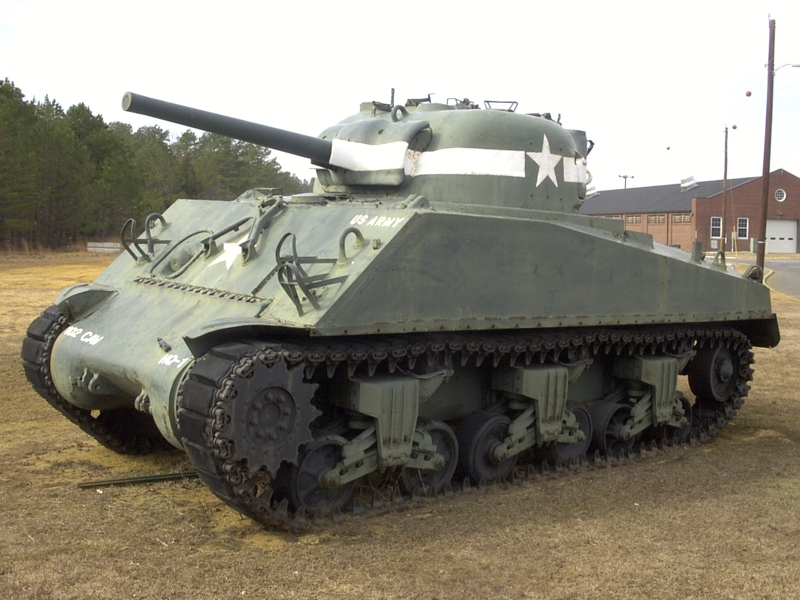
This model of the Sherman solved the welding problem in an even easier way, they just made the whole front plate from one rolled steel plate. This redesign also resulted in bigger hatches for the driver and co-driver.
Both of these tanks could have been used in the Philippines, but I’ve seen more composite hulls in images than M4A3 75w tanks, for what that’s worth.
Also I’m pretty sure Dragon has a very nice M4 composite hull PTO tank in their 1/35 line.
http://www.dragonusaonline.com/item_detail.aspx?ItemCode=DRA6441

THANK YOU!!! Your first example (rounded front) with the 75 somehow rings a bell with my memory of Dad’s conversations.
BTW, Dad left me with a few stories – a couple funny ones, some sad ones, and a couple horrific ones. Dad was pretty humble, never knew him to lie or exaggerate. I would love to commit these to “paper”, but don’t know where to pass them along – or for that matter if anyone is interested. Any ideas ?
Bill
You’re welcome. Glad I could help! I would love to see pics of the kit as it comes along!
I would love and be honored to host your Dad’s stories, the life of tankers fascinates me. I of course understand if your not interested.
Bill,
I was poking around trying to confirm what tanks the 44th used, and confirmed, composite hulls, just like that Dragon kit.
There is a pretty large 44th Tank Battalion Gallery at this site
12th Armored Division Web Site
I also found these images
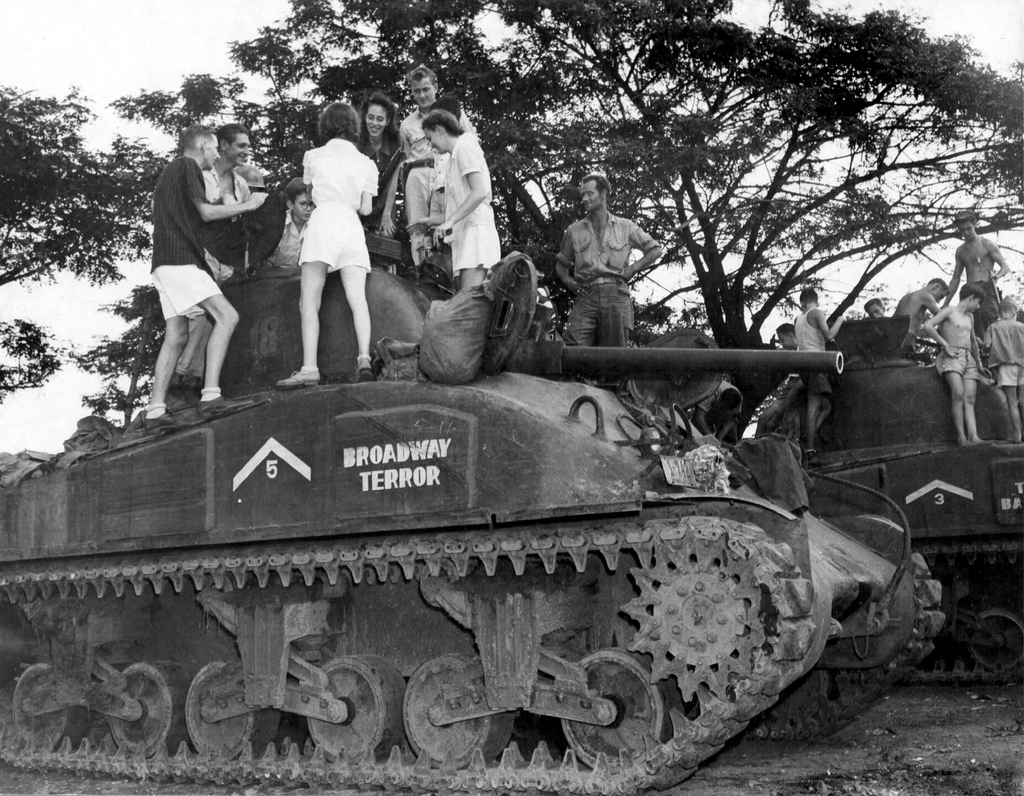
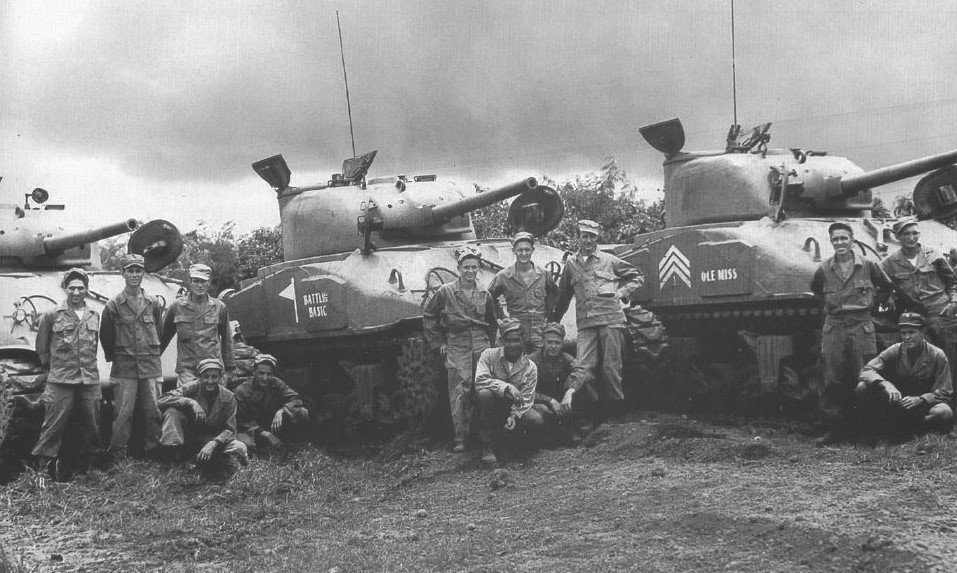
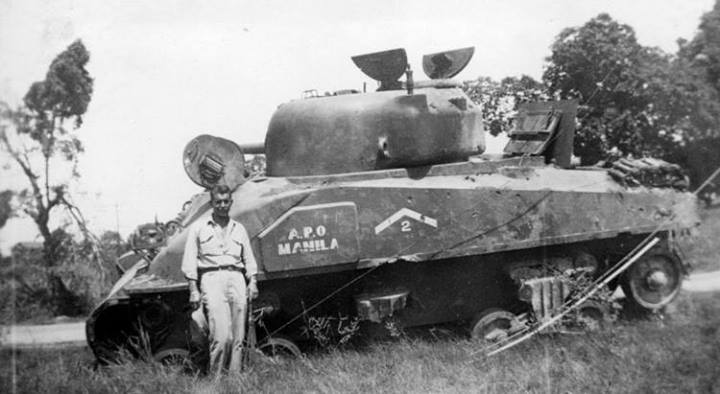
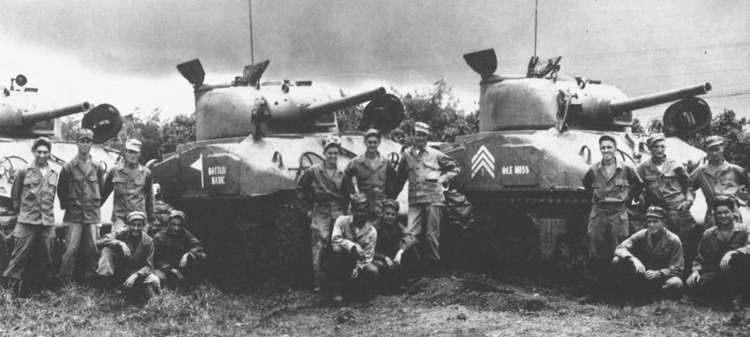

Plus this image for a decals for the battalion in 1/35
Hi,
Well, I ordered the Dragon #6441 model (Ebay) of the composite M4.
I would be pleased to pass along Dad’s stories to your site. I think it best if I write them up and send them via personal email, so that you may edit them as appropriate.
Thank you,
Bill Anderson
Hi,
Well, the Dragon kit of the “M4 Sherman composite hull pto” arrived today. I’ve been building model kits since the mid ’50s, and have a pretty extensive model railroad with all kit built structures and cars.
That said, this model is something else! It has over 330 parts including some brass etchings. I happily found that the instructions actually give two paint schemes for tanks of the 44th Battalion in Manila, which is the outfit my Dad was with.
I will not be working on the tank model for awhile, but I will post pics when there are some worth posting.
Thanks again for the guidance!
Bill Anderson
Spring, Texas
Bill,
Begin by researching 1st Cavalry in the theater specifically Philippines related to armor Sherman and othe tanks Staurts?.you’ll start to develop information and pictures (save copies to your computer or take pics with your phone camera from books) related to the tanks. If you can narrow down to your father’s organization or sister units in the 1st Cav. similarly equipped you’ll have answers close enough to build from. In this day and age almost every Sherman variant either has a complete kit or a resin cast modification kit to develop an existing model into the version of the Sherman sub-variant model.
I know thst some of the early Pacific theater Sherman’s were composite hull models (cast front glacis plates with hull remainder welded not cast) but I’m not sure if these were in the Philippines.
Rrgards,
44 th had M-4 Composites in PI, they got some M4A3(75 mm w) as replacement tanks as the war progressed . I always liked the Composites .
Both Dragon and ASUKA/TASCA make a nice Composite . One word on the earlier Dragon kits, they put an A3 hull in it. They are VERY good about replacing them though . Just take a pic of the kit and send it to them with your request.
Some interesting things I have found on the sherman while digging in the archives.
Most know the photo of the M4 with the T26 turret slapped on it that was done up as a mock up to show off, and most authors will leave it at that suggesting thats all that ever happened.
But they also had a M4A3E8 hull mount the T26 turret with the 90mm and they tested it for at least 2000 miles. They went as far as to weigh the tank up to 102,000 lbs for that. They were looking at a possible replacement for the jumbo at the time.
There was another little paragraph about the T26 turret noting it would fit in any 69″ turret ring and they then listed off a few vehicles such as the M4 and T14. (They went as far as doing the same to the M6 in 1944, details are not to clear if they finished building and testing this one, but all of the design plans are finished and were stored in an archive for future reference)
Whelm,
Great stuff, I didn’t know the that had actually done a real pilot vehicle on the A3E8 hull. That’s really interesting. Thank you for your comments!
http://i.imgur.com/371HAzR.png
http://i.imgur.com/XQzyljx.jpg
http://i.imgur.com/bVlOCxa.jpg
http://i.imgur.com/XWPZyN6.jpg
Hi!
I “assumed” that the Dragon kit of the M4 composite Sherman would indicate the tank color. They give decal directions for the M4 in Manila and Leyte and color for things like machine guns and shovels but not the tank body.
After looking at various pics, I’m a bit confused. Colors I’ve seen or various shades of olive green, gray, or khaki. Was the color “whatever” or was their a standard for those Sherman composites that found themselves in the Philippines?
Bill
Sorry it’s taken me so long to get back to you. The book, US Army Camouflage markings in WWII by Jim Mesko says the Shermans used by the Army in the pacific were mostly the base olive drab the army painted everything with. Camo was not used as often as in europe, and it wasn’t standardised. From what the books said, it was mostly bands of brown paint over the olive drab paint. In many cases what looks like a camo paint job may just be mud and dirt.
By the point in the war you are building the Sherman for, they didn’t have the white stars painted on the tanks anymore either.
Bill: The tank’s prescribed paint was done at the factory, not at the theater. All M4s left the factory in standard Olive drab. Whether they went to the PTO or ETO was not dictated in the contract orders.
My favorite paint for 1/35 US subjects is Tamiya Olive Drab, lightened with some Dark Yellow
Thanks all!
Olive drab it will be, without the stars. In the pics I recall, I never saw the stars so that makes sense. One of those unanswered questions I have is if (and what) Dad’s tank was named.
Ha, just had a hand operation so I won’t be modeling for awhile!
Bill
I hope that hand heals up ok. They thought the stars were being used as aiming points by Jap AT gunners, so they painted them over.
“Olive Drab” tended to change shades depending on what it was applied over, what it was thinned with, how it was applied, and how it weathered.
I have yet to see two WW2 vehicles with the same identical shade of OD (unless they’ve been freshly repainted).
For the most part if you hedge toward a brownish green version of OD you should be fine, as the read lead primers tended to impart a slight browninsh tinge to the color as it wore.
Good old Olive Drab was the base. I use Vallejo Model Air OD primer with a drop or two of desert tan primer added for scale and fading. Hope you find this useful.
Congrats for the site. Very interesting. I will link your site in my links page.
Keep going.
Marcos,
I checked out your site too, very nice.
Great site, beautiful photos. You only missed the Brazilian Shermans. After the war (Brazil fought in Italy, 1944-45) many M-4s were acquired by this country and used until the 60’s.
Love your posts, man. People seem to ignore that the Sherman served in various places for several more decades than the big cats, whereas the latter fizzled out of the proverbial armored workplace in less than a decade into the postwar era.
I actually noticed while watching Greatest Tank Battles on the military channel that you get a much better picture of the Sherman when you completely ignore the narrator (who pretty much overhypes everything). You never actually hear our boys (the allied and particularly US veterans) actually explicitly say that the Sherman is a bad tank. and when you hear the panther needing THREE shots to take a Sherman down and the German tanks having C-rate firing mechanisms, well…
Also, I need to ask: where did you get those awesome pictures from?
Thanks for the compliments; I found most of the pictures on WarAlbum.ru WorldWarphotos.com, and a mix of any place that had Sherman pics that I ran into over the last decade.
I really love the rare photos of the Sherman and the rest of the tanks in action in which you don’t get many as these from other sites.
Thanks Kenny!
I love them too, and thank for checking the site out!
You are welcome….the more I see the more inspire with my build, by the way….
Do you have any photos on M4A3E8? as right now, I am building a model on this Sherman and with the inspiration from the movie Fury. I love to see others conversations and what the tank crew do to their tanks.
No Twitter yet, but I suppose I should put one up, if I really want the site to get some traffic.
I love your site!… this is the best thing I’ve come across in years! …keep up the good work man!…I have your site on a constant open tab!
Very nice!
Ooooh I like the new theme!
This site has some great information.
I do think that the Sherman has been let down in that no one has pulled all the relevant information together and put it in what should be the correct perspective and position in the WWII (and Korea)
Some of this is paraphrasing Nicholas Moran (Chiefton who sounds British, acualy is Irish and served int he US Army!)
Armor: This gets into the details end, but what is relevant was it was sloped, the Pz IV was not, in comparison they were equal but you also have to take into account the quality of the armor. A Panther clearly had better front Armor, but its side armor was thin. One account of Sherman on Panther, they simply cross shot deliberately knocking 5 (memory) out in one go.
The add on armor of Patton’s 3rd would have been very effective (or as effective as armor can get) and the other mods of the sand bags and the concrete would have helped. Right hit with the right gun and nothing helped.
Tank on tank encounters were not the norm and while the Tiger II clearly had better armor and a great gun, those were extremely rare. Due to the same looks, Pz IV and Tiger 1 clearly would be mistaken for each other.
Also keeping in mind that the allies were on the offense (all but a few cases) and that lead to exposure and causality tanks and more importantly (far more often) , anti tank guns and tank destroyers in ambush could see and hit when the attacker could not.
With the combined arms integration, the same fixed position anti tank guns would be destroyed and possibly the Hetzer and the like as well.
Casualties for US tankers were very low (Chiefton) – so a mission kill was not a crew kill. Burned out tanks would be as much an effort to prevent recovery as brewing up in the first place.
All tanks brewed up and Russian tanks with their abysmal storage would be the worst, the later Sherman’s by far the best. The Germans strew shells in tank as well.
The 75mm did lack some capability, but it could make side kills when called on. Not a perfect solution, but in Normandy the ranges were so close as nothing likely was going to survive a hit on either side (other than the more open British sector)
As noted the US 76 was not only a good gun but also fit the turret vs the 17lb British. The British had their in Normandy and the US was late (the 76 was available, they just did not want it) – the British faced more open country and more tank on tank, the US until the breakout not nearly so much.
The 17 lb took over the turret, was award to load and the gunner was cramped. Better than nothing but a lousy setup out of need not well designed which the 76 version was.
The 17lb best round was Sabot but it was also horribly inaccurate at ranges where the reach of the 17 would have done good work (or better) – The US HVAP when available was clearly a superior overall round.
In many cases the 75 would have been better as it was the tank system as a whole that worked.
I still do puzzle on the lack of an equally capable 76 mm HE, the nonsense was the round speed but for HE you could easily accept a lack of sight accuracy67 and walk the rounds in and likely not an issue.
Another fallacy was the Chrysler Multi bank was a bad engine. While complex, the Brits accepted it in order to get a common engine, worked with Chrysler to get the carb relocated and the reliability up to par. Per NM, it worked just fine.
While the Ford V8 clearly was the overall best engine, as long as the Multi Bank worked (and it did) it was not a major impediment. Either engine would have to be pulled for a significant problem.
The Chieftain thinks that the US equipment was no more reliable , I disagree, but we both agree that the US logistics system was magnificent (in all respects) and they had the parts to fix what broke.
His good point was that the Sherman could be loaded with standard cranes and delivered and going too heavy had its own penalty there.
The Panther technically has some very superior aspects (front armor, gun, speed and maneuvering ) but that all was predicated on it working (and often 50% were often broke)
Armor quality played a factor and while it looked good quality was slipping and not what it was always cracked up to be (or just cracked )
The Pz IV was the more reliable tank but again, tank on tank significant battles were rare.
Huge losses meant the Germans were in constant renewal of crews, US and British losses were vastly lower and the crew coordination would be major in a fight.
Soviets you can only feel sorry for. The T-34 was a design marvel and an execution nightmare and the T-34-85 while better, still was very poor ergonomics, lacked radios, reliable electrics and good traverse (where the Sherman shined there)
The Chieftain feels the Sherman was the best tank for the US and I fully agree. I also feel it was the best overall balanced tank with some significant better aspect (turret traverse) and the simple sight system that was superior to the rest.
Any lack had to do with lack of intelligence by the Army Armor command (not upgrading the armor enough) – clearly it was done in field and the Jumbo that was very well armored (as well as you could get and still be mobile)
Sherman was a bit weak in track width though that had a solution as well.
The only negative on the Sherman was it was not the coolest looking tank (what the gun guys call tacti cool) – effective and a huge contribution to winning the war it was and never to be forgotten it was part of the combine arms system (Infantry first, Artillery next, Air and Tanks in the mix) .
Air Power: Research shows that tank kills by fighter bombers were few, they were extremely effective at the softer targets and without fuel, ammo and infantry , a tank was a sitting duck. Ironically there were cases of crews abandoning their perfectly safe tanks as the perceived threat was taken as real.